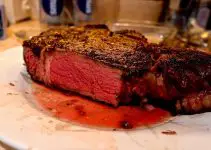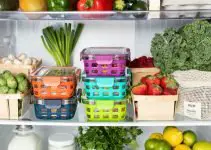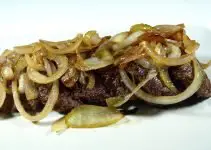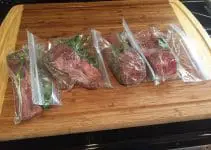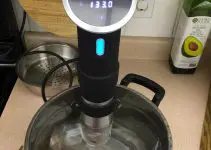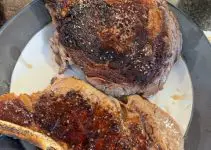Table of Contents
Sous vide is a popular culinary technique that literally means ‘under vacuum’, and is something that you will see as an increased sight in cooking shows like Masterchef. Instead of pan-fried or pot-boiled, sous vide food is prepared inside a vacuum sealed package and then subjected to intense heat directly before food is intended to be served.
The global sous vide machine industry is worth at least $180 million according to Statista, but the popular sous vide cooking technique is not just something you will see in households. Cooking the sous vide way is something that select restaurants employ to get warm, prepared food to their customers in time.
There is a lot of online discussion and buzz surrounding the use of sous vide as more people have come to hear about the technique’s use. Do restaurants, including high-end and Michelin-star restaurants use the sous vide technique – or is this something you can only expect from chains as a fast food convenience?
Here’s your guide to sous vide use, and exactly when and how some restaurants choose to use it.
A History of Sous Vide
The term sous vide literally means “under vacuum” in French, and refers to a cooking technique where vacuum sealed foods are subjected to intense beat by boiling. While many people only come to hear about it now, neither the technique nor its popular use in the restaurant industry is particularly new.
The first description of a cooking method that uses sealed and heated food dates back to at least 1799. After the turn of the century, the popularity of vacuum sealing would become more widespread as kitchen appliances changed – and this brings us to the 1970s.
The first chef to use sous vide techniques in his restaurant is said to be Georges Pralus in 1974 at the famous Restaurant Troigos in France. After this, an increasing amount of chefs both back then and today have started to employ the sous vide technique to guarantee that good food gets to their customers in time. You can find a more detailed article on Sous Vide History here – History of Sous Vide Cooking
Restaurants and Sous Vide
Do restaurants use sous vide?
The Sous Vide machine is quickly becoming an essential item in any serious home cooks kitchen. But what about professional chefs, and in commercial restaurant kitchens? The answer is a resounding YES!
Many chefs and restaurants use the Sous Vide machine regularly, and have been for many years. In fact the Sous Vide was originally developed by professional chefs, as we noted above.
Restaurants use Sous Vide cooking for many different uses and types of foods, similar to the recipes we outline in our blog.
Do restaurants use sous vide for Steak?
Yes, and more than you would think! Steak is one of the thousands of meal types that can be prepared with the sous vide technique. When done right, even the best taste-testers would enjoy a sous vide steak just as much as one that has been made any other way.
The Sous Vide is arguably one of the best methods for cooking a steak, and restaurants have quickly realized that. Not only is it tasty, but it is a very hands off method of cooking and they can gave multiple steaks cooking in the same container.
Do high-end restaurants use sous vide?
Many high-end, gourmet and Michelin-star restaurants all rely on the sous vide technique to get warm, excellent meals to their customers in time.
Does outback steakhouse use sous vide?
Outback Steakhouse is one of many restaurants that use sous vide, although many of their customers would never guess it.
How Sous Vide Cooking Works
The idea that sous vide cooking is as simple as boiling food in a ready-made bag is a misconception, helped in part by convenience cooking that has brought “complicated” meals to the house with microwave convenience.
Sous vide cooking is not just boiled cuisine in a sealed bag, but instead a more refined technique whereby the preparation of the food has to be right – and according to safety standards, like anything else that would happen in a kitchen!
Cooking foods in a vacuum sealed environment can help to lock the flavor deeper into the food, while cutting down on the cooking time it takes for the flavors to infuse. Like this, it works almost like a traditional pressure cooker would, but without the serious amounts of effort associated with pressure cooker food.
Sous vide cooking must subject foods to at least 140 °F to 160 °F to ensure that food is properly cooked, and safe to eat. Foods that are meant to go for longer (required for, say, stews or curries) requires higher temperatures for the sous vide method to guarantee safety. As is the regular rule, fish and chicken could require longer than beef – and that’s just one example of proper use.
If foods have not been sealed in the correct means using food-grade packaging (and the temperatures are not kept 100% correct), it cannot be called proper sous vide cooking and its use could even be a health risk.
The Benefits of Sous Vide in Restaurants
The first benefit to using sous vide cooking is added convenience for high-end food.
Celebrity chef Gordon Ramsay was subject to some media and public criticism after some of his own restaurants were found using sous vide preparation. When asked, he simply confirmed the fact that most high-end restaurants use the sous vide technique for gourmet food – especially when fresh ingredients of that location is difficult to source.
Sauces don’t have to take seven or eight hours when a customer places their order. Practical needs in a kitchen means that no order can take that long – and even the most high-end kitchens in the world require at least some form of previous food preparation. That’s what the sous vide technique gets used for.
The sous vide technique has further benefits. Nutritional benefits of the food are easier to lock in, and you are guaranteed that flavors permeate deeper into the dishes. When done properly, sous vide also has some benefits for health and safety.

